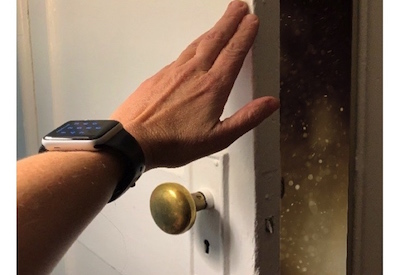Shutting the Door on Dust

July 15, 2019
By Mark Mullins
We know we talk a lot about fibre cleanliness, but let’s face it, contamination of fibre endfaces is still the number one cause of failures — regardless of much we harp on the topic.
You’ve probably often also heard comments surrounding the fact that dust caps are really just dust collectors. Thankfully, there are plenty of manufacturers out there that get it and have responded with shuttered fibre connectivity.
The dreaded dust cap
Regardless of the type of fibre, application or data rate, the transmission of light requires a clear pathway along a link, including through any passive connections or splices along the way. A single speck of dust on the core of a fibre that’s invisible to the human eye can cause loss and reflections, resulting in high error rates and degraded network performance. Contamination on a fibre endface can also adversely impact the interface of expensive optical equipment, and in some cases even render equipment inoperative.
You might be feeling thankful that your fibre connectivity components arrive in what looks like nice clean packaging protected by a small white (sometimes beige) dust cap to protect the endface from damage and supposedly dirt. But even the highest quality manufacturers who factory test each and every fibre connector know that you should still inspect every endface before you make your final connections. That’s because dust caps themselves can be a significant source of contamination.
While dust caps might give the impression of a clean endface, no one can really know for sure what was in that dust cover, even if it came from the factory. While dust caps are great at preventing damage to the endface, did you know that the plastic used to create dust caps can emit a residue as it deteriorates over time and the surface of the cap may contain mould-release substances used in high-speed production processes? In other words, don’t be surprised to find a contaminated endface when inspecting upon removal of a dust cap on a connector fresh out of the bag.
Dust caps are also a nuisance. Every time you plug and unplug from a fibre adapter you’ve got to either remove or replace the dust cap to maintain the endface protection. But those little plastic caps are more often that not dropped on a dirty floor or misplaced altogether, leaving unused ports void of protection and subject to contamination from dust particles in the surrounding environment – especially in the presence of static electricity.
The revolving door that’s also a window
Leading manufacturers today are working to help prevent fibre endface contamination by introducing fibre adapters with integrated shutter doors that allow you to do away with pesky dust caps. While there are a few different versions available, these little shutter doors are designed to move out of the way when a connector is inserted into the adapter – all without ever touching the endface of the connector. With no dust cap to remove, plugging in your fibre jumpers is a faster, cleaner, one-handed operation.
The other great feature of these little shutters is that many of them are transparent enough to let the light from your Fluke Networks’ VisiFault™ Visual Fault Locator shine through — not something you can do with opaque plastic dust caps. That means you can still easily do your tracing and end-to-end fibre link checks with the shutter door closed.
So, the next time you’re ordering fibre adapters, be sure to choose the shuttered feature if it’s available. Many adapters come standard with these shutters, but even if there’s a small upcharge, it’s worth the little extra to protect your fibre deployments – and not have to deal with dust caps.
Golden rule still applies
While we’re a big fan of shuttered fibre adapters, they don’t get you out of the golden rule of inspect, clean and inspect again. And even if you think you have properly cleaned a fibre endface, you still need to follow it. Thankfully Fluke Networks’ FI-7000 FibreInspector Pro accelerates the process by inspecting and certifying endfaces to the IEC 61300-3-35 Basic Test and Measurement Procedures Standard in just over a second.
And in case you haven’t heard, our award-winning FI-3000 FibreInspector™ Pro MPO Inspection Camera automates inspection of one or two rows of 8, 12, or 16 UPC or APC style MPO connectors, providing pass/fail results in seconds with an instant live view that gives you the ability to pinch and zoom from full trunk to individual endfaces in real time.
This article was first published online by Fluke Networks.
















